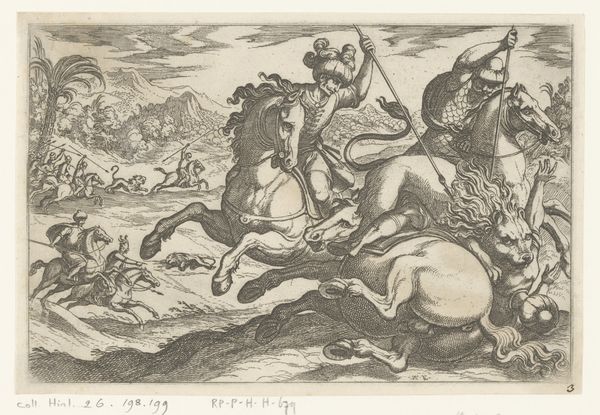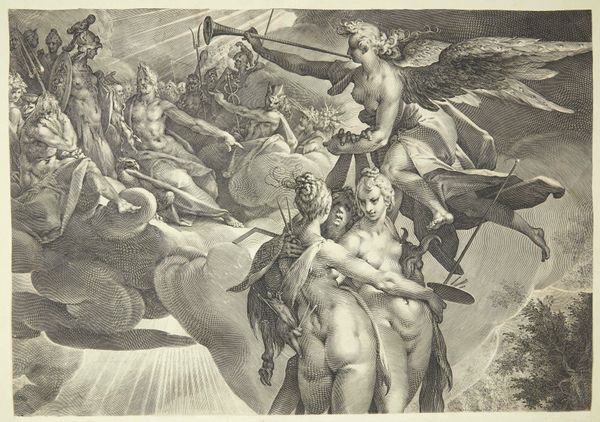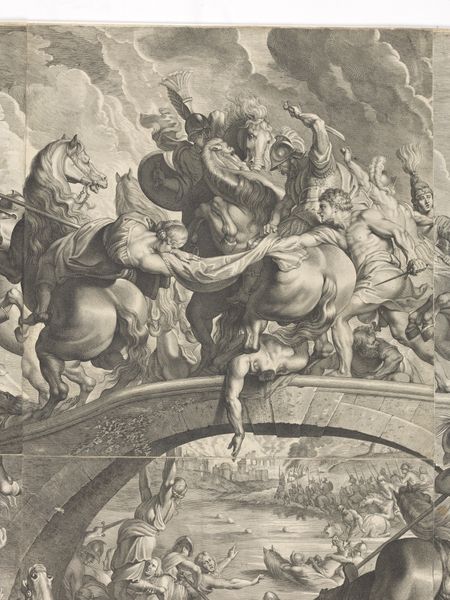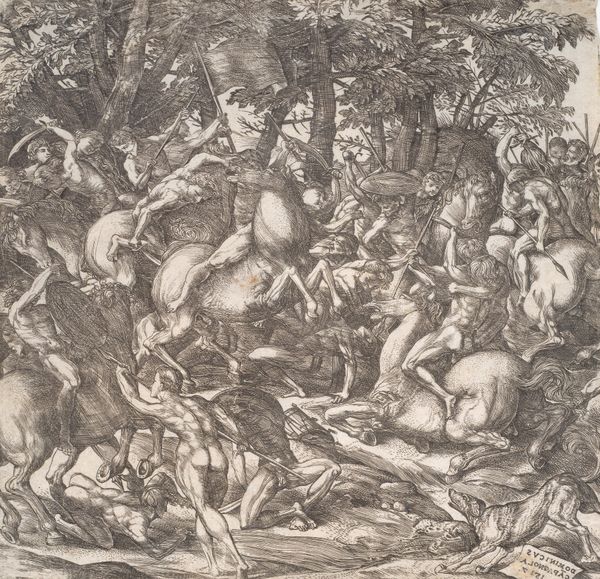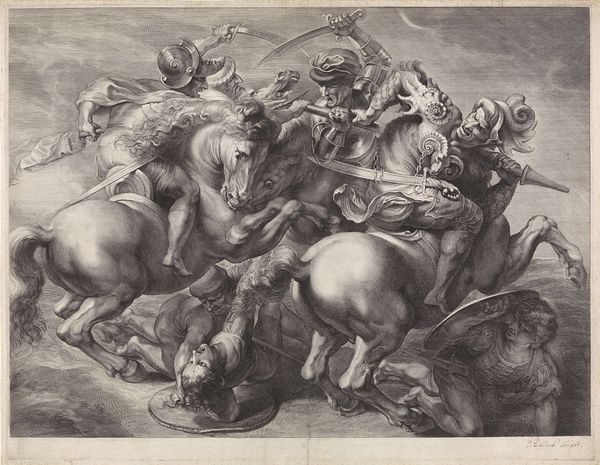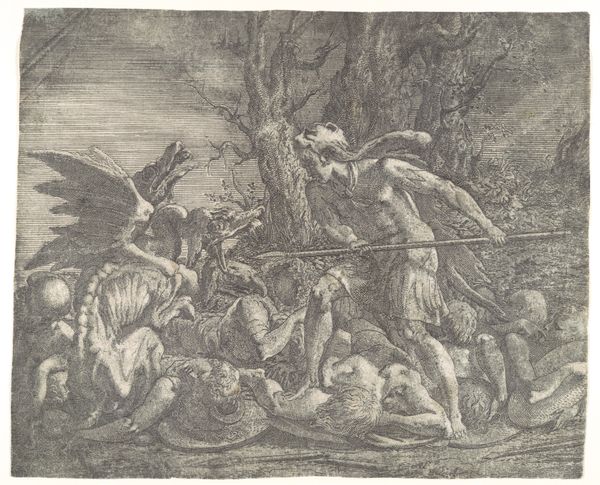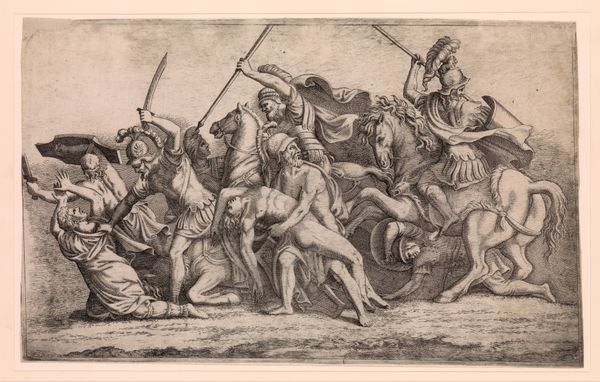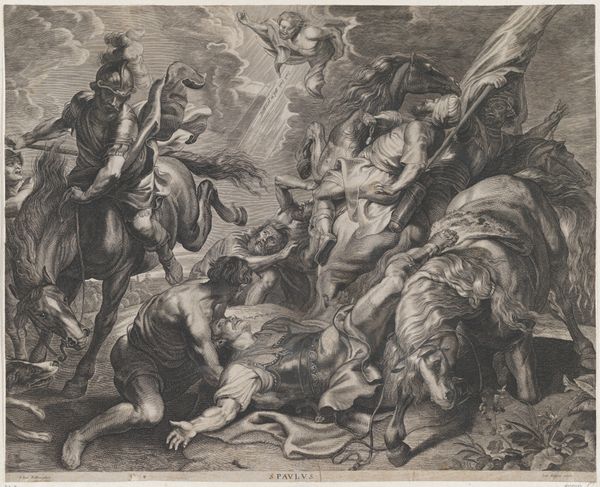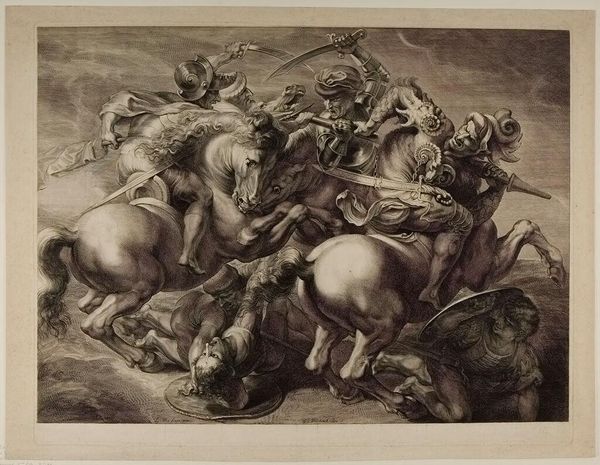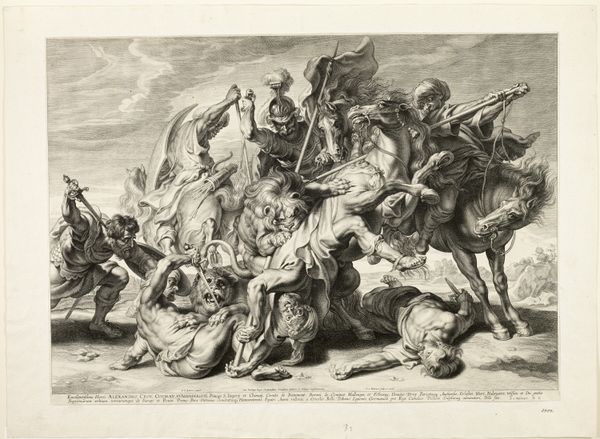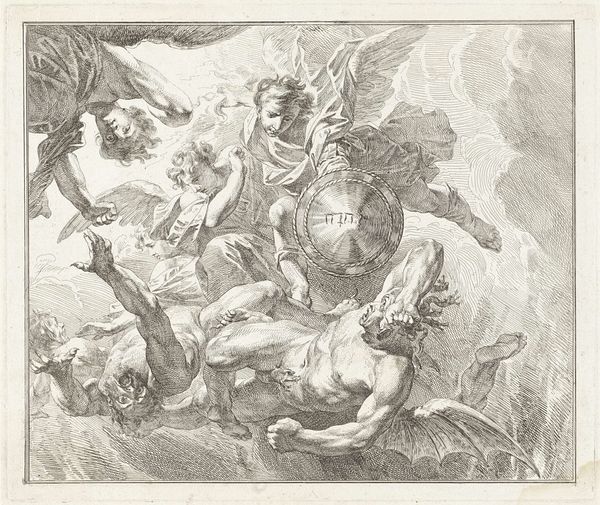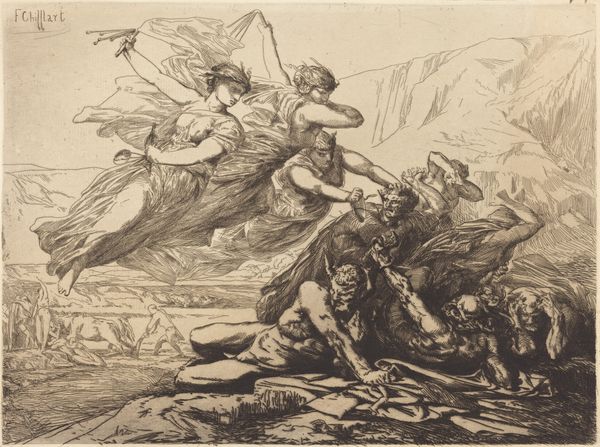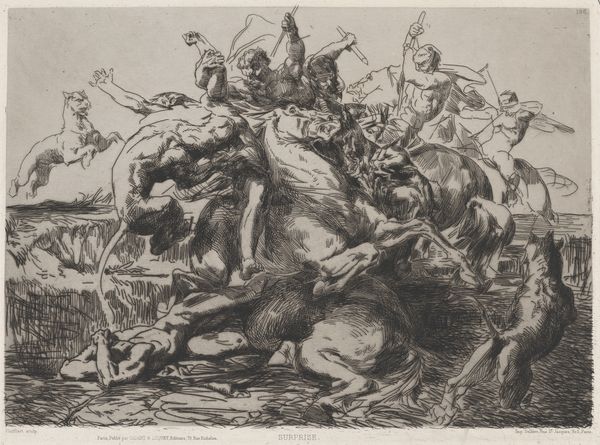
Theseus and Pirithoüs Clearing the Earth of Brigands 1806
0:00
0:00
drawing, graphite, charcoal
#
drawing
#
narrative-art
#
classical-realism
#
charcoal drawing
#
figuration
#
pencil drawing
#
romanticism
#
graphite
#
charcoal
#
history-painting
#
academic-art
#
charcoal
#
graphite
Dimensions: 23 3/8 × 29 1/2 in. (59.44 × 74.93 cm) (sheet)31 3/4 × 37 3/4 × 2 3/8 in. (80.65 × 95.89 × 6.03 cm) (outer frame)
Copyright: Public Domain
Editor: So, this is Marie-Joséphine-Angélique Mongez's "Theseus and Pirithoüs Clearing the Earth of Brigands" from 1806, made with graphite and charcoal. There’s a real energy in it; a sense of chaos and violence, but with these very idealized figures. What do you see in this piece? Curator: I see a work deeply engaged with the political climate of its time. Consider its production under Napoleon; history paintings, particularly those depicting heroic deeds from antiquity, were often deployed to legitimize power. Does this drawing perpetuate that trend, or complicate it? Editor: It’s interesting you say that. The subject matter seems straightforwardly heroic, but the frantic composition also suggests something less celebratory. Are we meant to focus on the heroism, or something else entirely? Curator: Exactly. The “heroic” subject is undeniable. The artist has positioned Theseus and Pirithoüs as civilizing forces. Yet, it's vital to consider how women are represented – captured and helpless. What does that tell us about the social and gender hierarchies being reinforced, even while seemingly promoting liberty? Editor: I never thought of it that way. The way the women are being held—almost like trophies—it's really unsettling. I wonder if the artist was intentionally subverting the heroic narrative, or simply reflecting the values of the time? Curator: It's a crucial question, and one we may never definitively answer. But, it is more likely a reflection of contemporary political desires. It shows us that even artwork depicting liberty can be caught within contemporary socio-political structures. Editor: I'll definitely look at heroic imagery with more critical eyes now. Thanks. Curator: Likewise, I appreciate the fresh perspective.
Comments
minneapolisinstituteofart almost 2 years ago
⋮
Mongez enjoyed success as a history painter–a rare and grand achievement for a woman artist active during the Napoleonic era. She studied with Jacques-Louis David, the most influential artist in France. Mongez’s paintings were exhibited at the Paris Salons from 1802 until 1827. Mongez’s drawing relates to a painting exhibited at the Salon of 1806, which was acquired by the Russian Prince Youssoupoff. Plutarch’s "Life of Theseus" inspired the composition. The legendary Greek hero sought to rid his kingdom of brigands. Here, Theseus and his companion the Lapith Pirithoüs rescue two maidens from their abductors. Theseus wields a club at the bandit who attempts to flee on horseback, while Peirithoüs, after overpowering a second bandit with his sword, lowers a maiden from a rearing horse. Mongez’s mastery of David’s lessons is revealed in the skillfully drawn figures, horses, and drapery all disposed in a rhythmic composition. In contrast to the passages of black and white chalks, Mongez subtly colors Pirithoüs’s sword sheath with light blue chalk and flesh tones in ochre chalk.
Join the conversation
Join millions of artists and users on Artera today and experience the ultimate creative platform.
